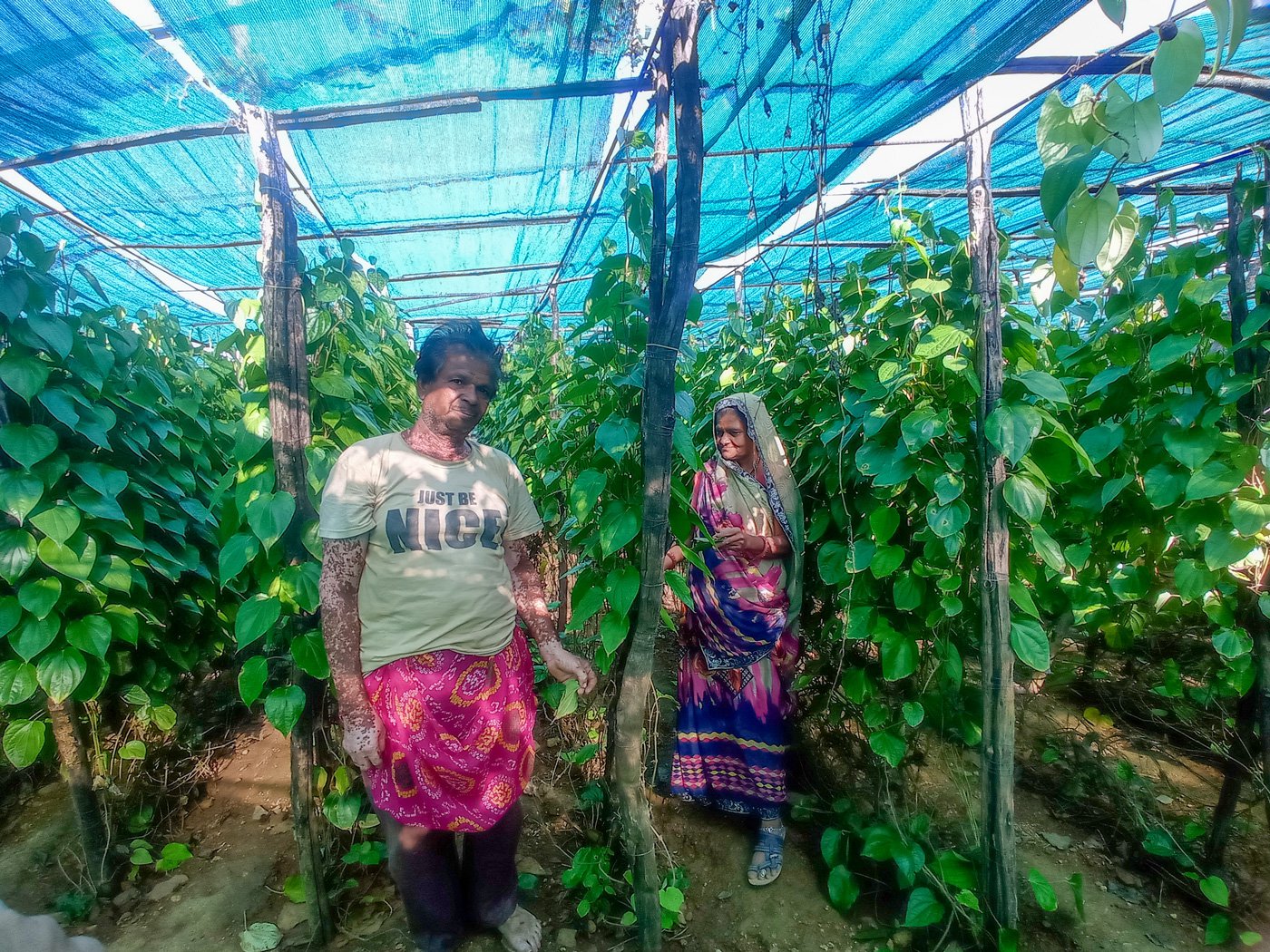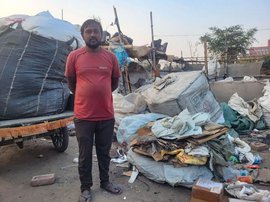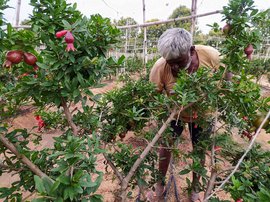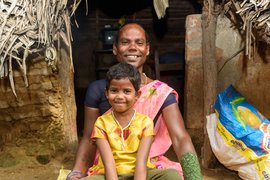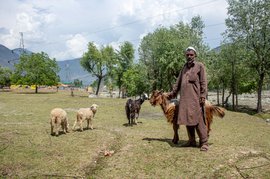Prakash Bundiwaal is standing in his paanwaari . The heart-shaped paan (betel) leaves grow on thin climbers in densely packed rows; they are covered with a synthetic net to protect them from the harsh heat and winds.
Paan leaves are most critical to making paan which is eaten across India after meals. Variety of seeds and nuts like saunf (fennel), supari (betel-nut), gulkand (rose petal preserve) are wrapped in the green leaf with chuna (lime paste) and kattha (catechu powder) to give it a minty aroma and a juicy taste.
The village of 11,956 people is well known for its good quality paan leaves. And Prakash’s family, like many others in Kukdeshwar, has been farming the leaf since they can remember. They belong to the Tamboli community, listed as an OBC (Other Backward Class) in Madhya Pradesh. Prakash, now in his sixties, started working in the paanwaari when he was nine years old.
But all is not well in Bundiwaal’s 0.2 acre field. The storm caused by cyclone Biparjoy in May 2023 has created havoc for this small farmer. “No insurance is provided to us, and the government does not offer any assistance even if everything is lost in the storm,” he says.
The union government provides weather-related insurance to several agricultural products under the National Agricultural Insurance Scheme (NAIS), however, betel leaves are not one of them.

Paan
fields are covered with a green synthetic net (left) in Kukdeshwar village of Neemuch district and so is Prakash Bundiwaal's
paanwari
(right)


Left: Entrance to Prakash's field 6-7 kilometres away from their home. Right: The paan leaves grow on thin climbers in densely packed rows
Cultivating betel leaf is a lot of effort: “There is so much work in the paanwaari , it consumes all our time,” says Prakash’s wife, Ashabai Bundiwaal. The couple water the field every three days. Prakash adds, “Some farmers use new technologically advanced machines [to irrigate the fields], but the majority of us still rely on the traditional pot.”
Paan is sown in March every year. “The soil is mixed with things found at home like buttermilk, urad dal , and soybean flour. We used to use ghee too, but because it is expensive now, we can’t anymore,” says Prakash.
In the paanwari it is mostly women who trim the bel (climbers), and pluck around 5,000 leaves everyday. They also repair the synthetic net and fix the bamboo stick as support for the creepers.
“The work of a woman is twice as much as that of a man,” says Ranu Bundiwaal, their daughter-in-law. The 30-year-old has been working on paan fields since she was eleven. “We have to wake up as early as 4 a.m. and do household chores, clean and cook.” They also have to carry their lunch.
The family shifted their paanwaari in the early 2000s, “due to the lack of water and quality soil, to another place 6-7 kms away from our home,” says Prakash.


Left: Prakash irrigates his field every three days using a pot. Right: A hut in their paanwari to rest and make tea
They spend up to two lakh on seeds, irrigation and occasionally, labour. “Sometimes, it is harder to even get 50,000 rupees [in a year] after that,” says Prakash. They own an additional 0.1 acre of land where they cultivate wheat and few fruits and vegetables to supplement their income.
The family separate the good leaves from the damaged ones and stack them up to be sold in the mandi , says Ranu. “Sorting out the paan usually takes until midnight every day, and sometimes we even work until 2 a.m.,” says Ashabai.
The paan are sold in bundles of 100 in the mandi , which takes place daily from 6:30 to 7:30 a.m. “About 100 sellers participate, but there are only 8-10 buyers,” says Sunil Modi, who has come to sell paan in the mandi . The leaves usually go bad after 2-3 days, so “we are compelled to sell everything quickly,” the 32-year-old adds.
“Today it was not bad. It was 50 [rupees] for a bundle; more than usual,” says Sunil. “The occupation is profitable during the wedding season when it is used in poojas as it is considered auspicious. The demand rises as people prefer to have paan stalls at weddings, creating a brief period of opportunity, but other than that it's dull going,” adds Sunil. And it depends on the season.


Paan leaves are cleaned and stacked in bundles of 100 (left) to be sold in the mandi (right) everyday
Another pressure comes from the easy availability of tobacco pouches. “No one wants to buy paan now,” points out Prakash. A single paan is priced at Rs. 25-30 and one can buy five tobacco pouches in the amount. “Despite paan having more health benefits, people choose to eat pouch because it is cheaper,” he adds.
Sourabh Todawal used to be a paan farmer but frustrated with the unstable income left the profession in 2011 and runs a small kirana (grocery shop) now. He earns up to Rs. 1.5 lakhs a year from it, almost two times what he earned as a paan farmer.
Vishnu Prasad Modi switched from farming paan to operating a computer 10 years ago. He says that paan farming is not profitable: “There is no suitable time for [ paan ] farming. In summer, the leaves suffer from the loo [hot winds], and in winter, there is minimal growth [of the vine]. During the monsoon, there is constant danger of leaves getting damaged from heavy rain and storms.”
Seeing the Banarasi
paan
receive a GI (geographical identification) tag in April 2023, Prakash's son Pradeep who also grows
paan
leaves says, “We wish that the government gives us the GI tag as it will benefit our business significantly.”
